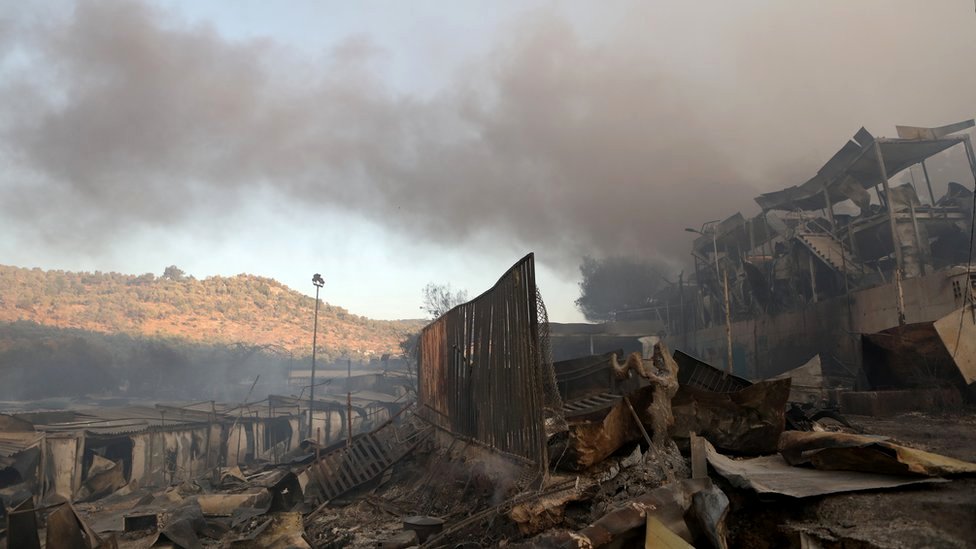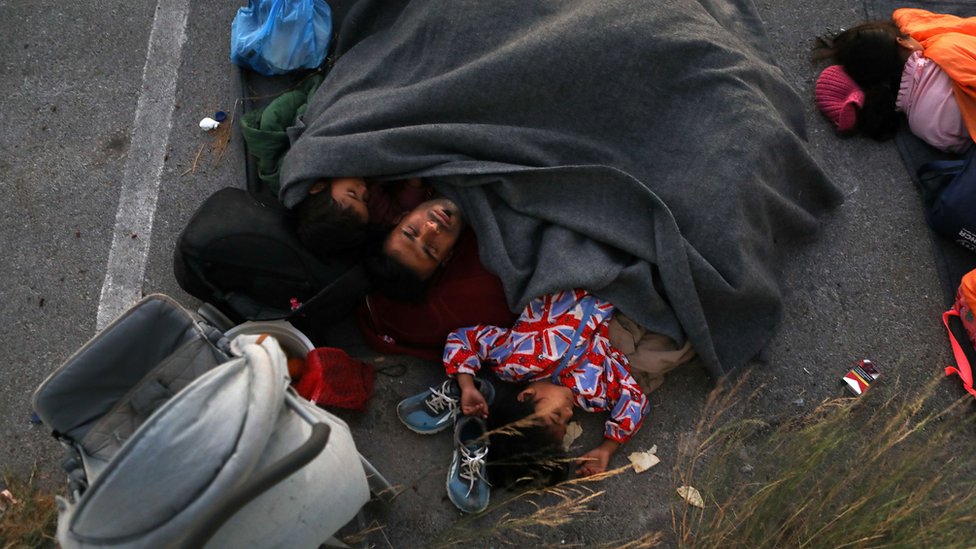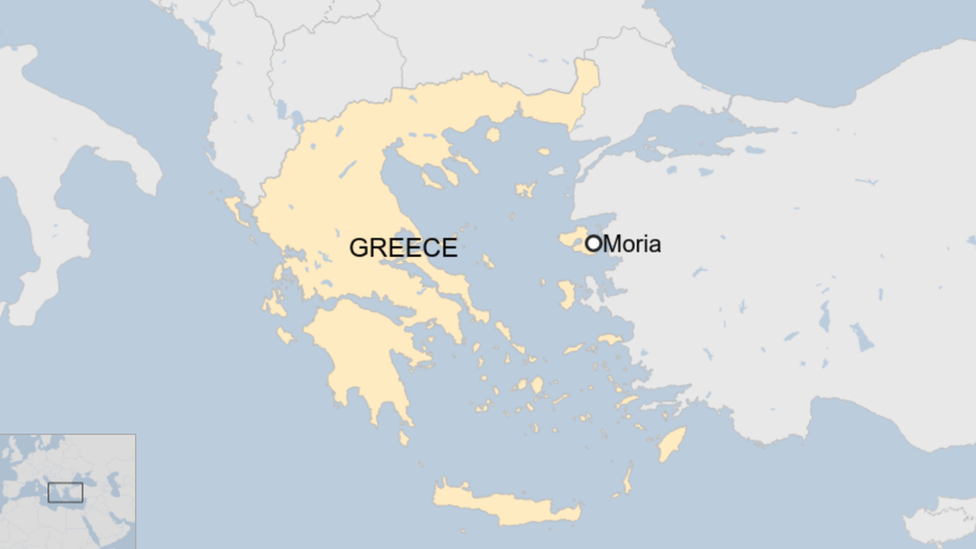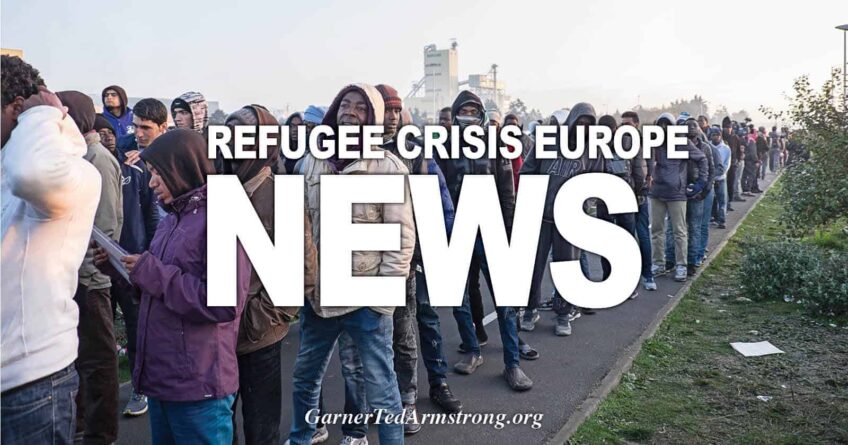Michalis Fratzeskos, deputy mayor for civil protection, told ERT the blaze was “premeditated”. Migrant tents had been empty, he said, and arsonists had “taken advantage of strong winds”.

Images show the destruction of the site after the blaze – Reuters
But some migrants told BBC Persian the fire had broken out after scuffles between migrants and Greek forces at the camp. Several blamed “far-right Greeks” for the blaze after the announcement of coronavirus cases, and
took photos of what they said were canisters used to ignite the flames.
Marco Sandrone, Lesbos project co-ordinator for Médecins Sans Frontières (MSF), told the BBC it was difficult to say what had caused the blaze, with several different fires and protests erupting in the camp.
“It’s a time bomb that finally exploded,” he said, adding that people had been kept in “inhumane conditions” at the site for years.

A state of emergency has been declared following the fire at the camp on the island of Lesbos – Reuters
One migrant from Afghanistan, named only as Yaser, told Reuters news agency that the fire had forced everyone to run.
“We don’t know where to go, and all the refugees are outside, and trying to find a place to at least just stay,” he said.
The mayor of Mytilene, Stratis Kytelis, said it was “a very difficult situation because some of those who are outside will include people who are positive [for coronavirus]”.
What has the reaction been?
“The disaster at Moria is total,” Greek migration ministry secretary Manos Logothetis told ANA news agency, and said he was heading to the site.
About 3,000 people are being temporarily housed in tents on Lesbos until alternative shelter can be found, officials said.
Greek Prime Minister Kyriakos Mitsotakis called an emergency meeting to discuss the fire on Wednesday morning, and several ministers have been sent to Lesbos to assess the situation.
The EU has offered to help with the response.
European Commission President Ursula von der Leyen said the main priority was “the safety of those left without shelter”.

The camp has reportedly been completely destroyed by the fire – Reuters
German foreign minister
Heiko Maas described the blaze as a “humanitarian disaster” and tweeted about “the distribution of refugees among those willing to accept admission in the EU”.
Prime Minister of the German state of North Rhine-Westphalia, Armin Laschet, later offered to “take in 1,000 refugees”.
A statement issued by UNHCR, the UN refugee agency, said it was aware of “tensions” between locals and migrants.
“We urge all to exercise restraint,” it said, and asked anyone who had been at the camp “to restrict their movements and stay near [the site], as a temporary solution is being found to shelter them”.
In 2018, UNHCR urged the Greek government to move asylum seekers away from Lesbos, describing conditions as at “boiling point”. At the time, there were 8,000 people living in the Moria camp.

Migrants have evacuated the camp but have not been allowed to enter the nearby town – Reuters
What is the camp?
The Moria Refugee Camp lies north-east of Mytilene, the capital of Lesbos. It has been overwhelmed by huge numbers of refugees for years.
According to InfoMigrants,
about 70% of people in the camp are from Afghanistan but migrants from more than 70 different countries live there.
An overflow site – the Kara Tepe Refugee Camp – has since been built but there is still not enough space to accommodate all arrivals.

For years, thousands of people who arrived on Lesbos were placed in the camp and could not leave until their asylum application was processed on the mainland – a slow, bureaucratic process.
The EU has tried to resettle migrants among different member states but governments across the bloc have rejected different proposals, and migrants have waited in squalid conditions.
The Greek government plan to build closed detention sites to house migrants on the Greek islands.
Protesters on Lesbos attacked authorities in February who brought construction equipment to the island.
Source: https://www.bbc.com/news/world-europe-5408220
[
Disclaimer]














